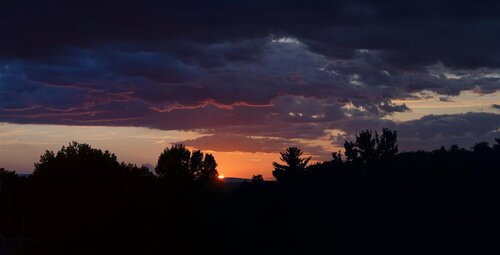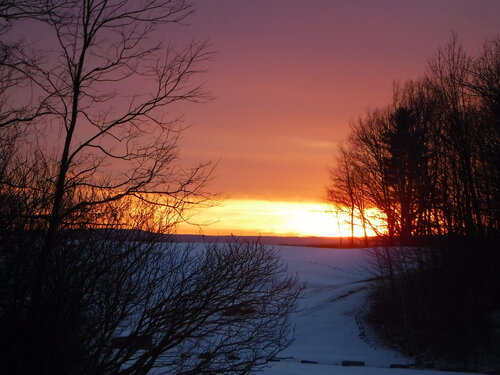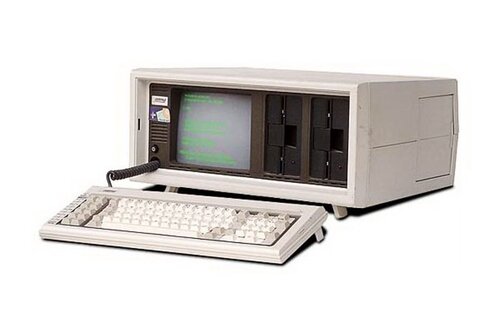Brett Roberts
EF5
As someone who went through a pre-purchase phase about a year ago where I researched the nitty gritty details of current DSLRs rather obsessively, this would be my pick for storm photography if money and size/weight were no object, and I were focused exclusively on stills (no video concerns):
Nikon D810
Nikon 14-24mm f/2.8
Nikon 24-70mm f/2.8
Nikon 70-200mm f/4 VR
For pure image quality in most storm situations, it's virtually impossible to top that setup without jumping to medium format (and even then, it's not necessarily a given).
Close runner-ups for bodies: (1) Sony A7r; (2) Nikon D750 or Nikon D610 or Sony A7.
The Sony A7s is an intriguing option, and for the specific case of night storm photography in the absence of significant lightning, it comes out on top. However, when averaged over all storm photography situations most of us encounter, I'm not sure its exceptional performance at ultra-high ISO is worth the loss of resolution. If money were truly no object, a bag with both an A7r (daytime through dusk) and A7s (after dark) would be perfect; the compactness of the mirrorless A7 series would make size/weight a non-issue, too.
If you're about to purchase your first serious camera and storms/weather/landscapes are your primary photographic interest, my advice would be to avoid the Canon system, despite its continued popularity. Their sensor technology has fallen far behind all the competition regarding dynamic range at low ISO, which is a huge factor for many daytime storm photos. They have great lenses -- arguably the best lineup on the market overall -- but to me, it's not worth that tradeoff (which is why I went through pains last year to switch to Nikon after a decade using Canon). Recent Nikon full-frame DSLRs and the Sony A7/A7r all use essentially the same sensors, and they're the best on the market at capturing high-contrast scenes for images shot below ISO 3200 or so. (Disclaimer: this certainly isn't a slam against current Canon users, as I was one too until very recently; plus, there are numerous scenarios outside of storms where Canon still offers real advantages: video, sports/wildlife/action, and night/astro, for example).
Nikon D810
Nikon 14-24mm f/2.8
Nikon 24-70mm f/2.8
Nikon 70-200mm f/4 VR
For pure image quality in most storm situations, it's virtually impossible to top that setup without jumping to medium format (and even then, it's not necessarily a given).
Close runner-ups for bodies: (1) Sony A7r; (2) Nikon D750 or Nikon D610 or Sony A7.
The Sony A7s is an intriguing option, and for the specific case of night storm photography in the absence of significant lightning, it comes out on top. However, when averaged over all storm photography situations most of us encounter, I'm not sure its exceptional performance at ultra-high ISO is worth the loss of resolution. If money were truly no object, a bag with both an A7r (daytime through dusk) and A7s (after dark) would be perfect; the compactness of the mirrorless A7 series would make size/weight a non-issue, too.
If you're about to purchase your first serious camera and storms/weather/landscapes are your primary photographic interest, my advice would be to avoid the Canon system, despite its continued popularity. Their sensor technology has fallen far behind all the competition regarding dynamic range at low ISO, which is a huge factor for many daytime storm photos. They have great lenses -- arguably the best lineup on the market overall -- but to me, it's not worth that tradeoff (which is why I went through pains last year to switch to Nikon after a decade using Canon). Recent Nikon full-frame DSLRs and the Sony A7/A7r all use essentially the same sensors, and they're the best on the market at capturing high-contrast scenes for images shot below ISO 3200 or so. (Disclaimer: this certainly isn't a slam against current Canon users, as I was one too until very recently; plus, there are numerous scenarios outside of storms where Canon still offers real advantages: video, sports/wildlife/action, and night/astro, for example).




